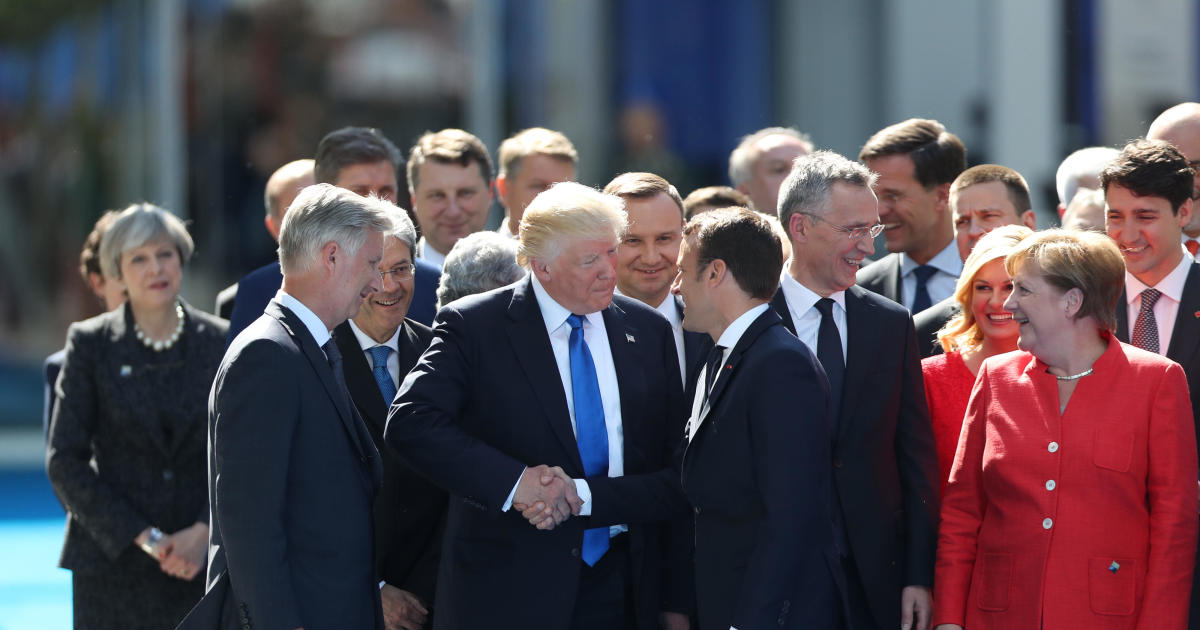NATO countries prepare for possible Trump win in 2024.
With the upcoming presidential election only six months away, America’s NATO allies are gearing up to increase their defense spending in preparation for the potential upheaval of a second term in office for Donald Trump.
NATO Secretary General Jens Stoltenberg is developing a funding plan to shield the 75-year-old military partnership from any shifting political landscapes that may impact the alliance, according to Oana Lungescu, who previously served as the longtime lead NATO spokesperson for Stoltenberg.
Lungescu emphasized the importance of predictability for both allies and for Ukraine. She stated to CBS News, “This [plan] relieves the U.S. of some of its organizational burden while still maintaining full oversight.”
Stoltenberg recently proposed a $107 billion, five-year package of military aid for Ukraine, recognizing the need for a more direct involvement from the broader alliance in funding, as reported by Reuters last month.
The plan involves European allies establishing a shared Ukraine aid fund and increasing their contributions to support Kyiv’s defense efforts, thereby reducing the significant funding provided by the United States.
During his first term as president, Trump demonstrated a willingness to disrupt the NATO alliance. His criticisms of some NATO members for failing to meet defense funding commitments shocked America’s allies. The Trump campaign has pledged to aggressively pursue a policy of urging allies to boost defense spending in a potential future Trump administration.
According to Trump campaign national press secretary Karoline Leavitt, “President Trump got our allies to increase their NATO spending by demanding they pay up, but Crooked Joe Biden went back to letting them take advantage of the American taxpayer.”
Lungescu highlighted that Stoltenberg’s strategy aims to address Trump’s concerns about NATO member states not sharing the economic burden adequately. Simultaneously, this plan seeks to safeguard Ukraine from potential delays in U.S. aid and weapons funding that could arise in Congress, mostly due to House Republicans’ opposition.
Furthermore, NATO allies are boosting their individual defense spending, although Lungescu acknowledged that American presidents dating back to Eisenhower have criticized NATO partners for insufficient contributions.
NATO guidelines stipulate that member states should devote a minimum of 2% of their Gross Domestic Product (GDP) to defense spending to ensure the Alliance’s military readiness. Despite NATO’s members collectively possessing nearly equal wealth to the U.S., non-U.S. allies spend less than half of what the United States allocates to defense.
As of 2023, only 10 out of the 30 NATO allies had met the 2% spending commitment, excluding the U.S. However, it is anticipated that two-thirds of NATO allies will reach the target by the end of the year. Lungescu predicted that by the Washington NATO summit in July, there would be updated figures demonstrating significantly increased defense expenditure.
Former President Trump indicated at a campaign rally in South Carolina in February that he would encourage Russia to act as they pleased with NATO allies who do not fulfill their defense spending obligations to the alliance.
In light of Trump’s previous inclinations, John Bolton, Trump’s former national security adviser, expressed concerns over the potential repercussions of a second Trump term, suggesting that Trump might attempt to withdraw the U.S. from NATO if reelected.
Former Commanding General of the U.S. Army in Europe, Ben Hodges, warned that Trump’s unpredictability poses a significant threat to NATO. Hodges underscored the urgency for defense investment to maintain diplomatic relations with any future Trump administration.
A recent war game conducted by Finley Grimble, a former intelligence analyst for the U.K. Ministry of Defense, explored the consequences of a second Trump presidency on the NATO alliance. The war game scenario envisioned a weakened NATO at risk of collapse, even without the formal withdrawal of the U.S. from the alliance.
Grimble’s analysis depicted a narrative where Trump wins reelection, attempts to broker peace between Ukraine and Russia, and subsequently slashes aid to Ukraine. Despite lacking the congressional support necessary to withdraw from NATO, the Trump administration significantly reduces U.S. involvement in NATO activities.
The war game highlighted the vulnerabilities within NATO’s command structure, particularly the authority vested in the supreme allied commander of NATO forces in Europe, who answers to the U.S. president. Grimble emphasized the potential ramifications of a scenario where Trump impairs NATO’s operations by directing the supreme allied commander to halt cooperation.
Amidst these uncertainties, NATO allies are gearing up to enhance their defense spending commitments in anticipation of the challenges that may arise in a second Trump presidency and to fortify the alliance’s unity and collective security.








